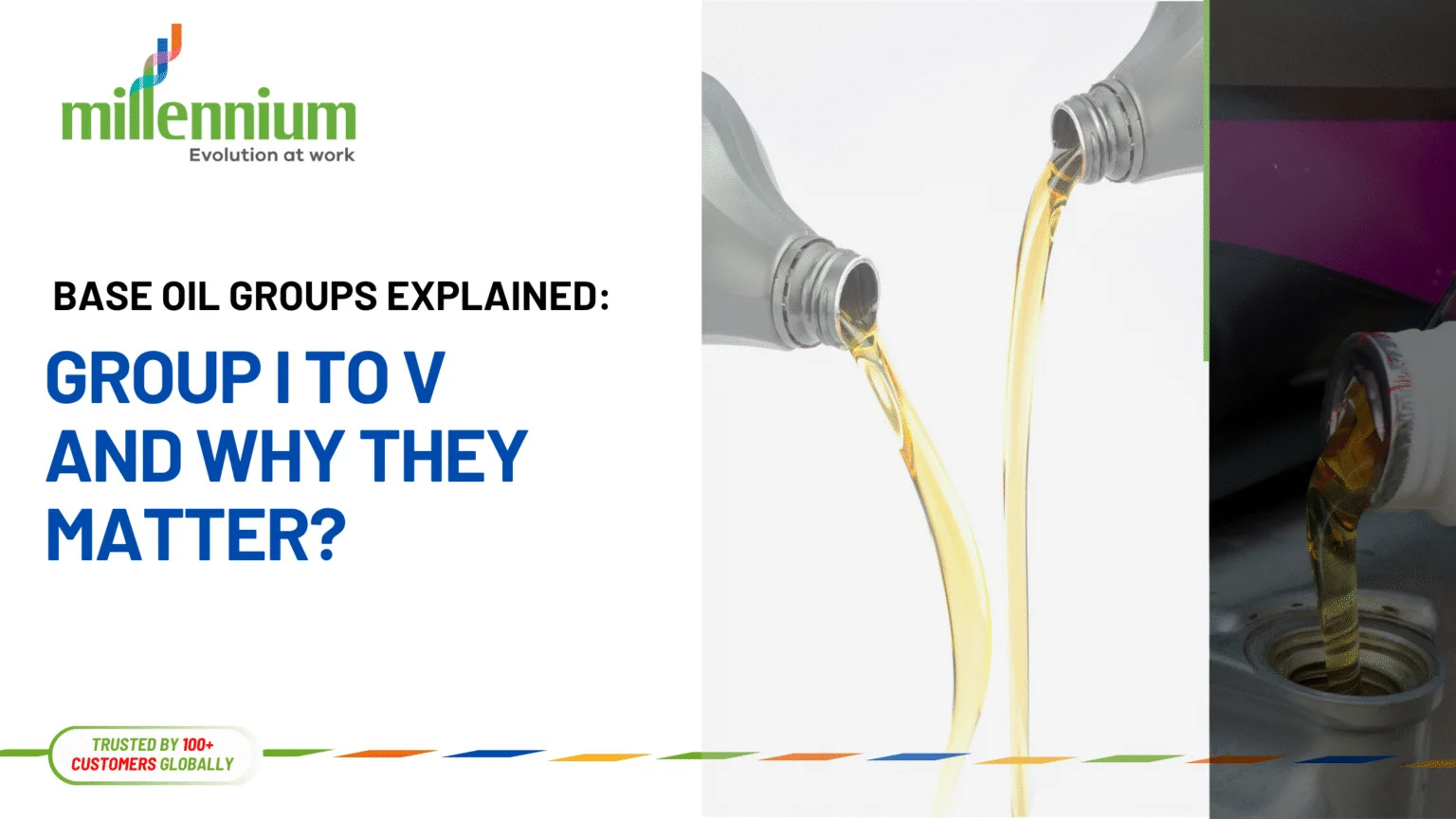Defining the Fluid Core: What is Base Oil?
Base oil is the primary ingredient in lubricants, making up about 70–90% of the formulation, depending on the application. It serves as the carrier for additives and is responsible for the fundamental lubrication, cooling, and sealing properties in oils used for engines, gearboxes, compressors, hydraulic systems, and more. Base oils are refined from crude oil or synthesized chemically, and they vary widely in performance based on their purity, viscosity, and chemical composition. To bring clarity and standardization, the American Petroleum Institute (API) classifies base oils into five groups—each with unique attributes and uses.
Profiles of Five Groups: Base Oil Groups I to V
Group I – Solvent-Refined Simplicity
Group I base oils are processed using conventional solvent refining methods. They contain higher levels of sulfur and aromatic compounds and have lower saturates (less than 90%). Their viscosity index (VI) ranges from 80 to 120. These oils are typically amber in color and are cost-effective, making them suitable for older engines, general-purpose lubricants, and non-critical applications. However, they offer lower oxidation stability and performance in extreme temperatures.
Group II – Cleaner and More Stable
Group II base oils are produced using hydrocracking, a more advanced refining process that reduces impurities like sulfur and enhances the saturation level (more than 90%). With a similar VI range (80–120) as Group I but better thermal and oxidative stability, these oils are commonly used in modern engine oils and industrial lubricants. They are clearer in appearance and offer a balanced combination of performance and affordability.
Group III – High Performance, Highly Refined
Often referred to as “synthetic” in some markets, Group III base oils are manufactured using severe hydrocracking or hydroisomerization techniques. These oils have a VI of over 120 and very low levels of sulfur and aromatics. Their purity, thermal stability, and oxidation resistance make them ideal for high-performance engine oils, especially those requiring extended drain intervals or better fuel economy. They bridge the gap between conventional and fully synthetic oils.
Group IV – True Synthetics (PAOs)
Group IV base oils consist of polyalphaolefins (PAOs), synthesized through chemical processes that build the molecules from smaller hydrocarbons. PAOs provide superior thermal stability, low-temperature fluidity, high VI (typically above 130), and excellent oxidation resistance. These oils are used in top-tier synthetic lubricants designed for extreme temperature conditions and high-performance applications such as racing, aviation, and heavy-duty machinery.
Group V – All Others (Esters, PAGs, etc.)
Group V includes all base oils that don’t fit into the first four categories. These are often specialty fluids like esters, polyalkylene glycols (PAGs), and silicone oils. Many Group V oils are used as additives to enhance the properties of other base oil groups or as standalone fluids in specific industries like refrigeration, aerospace, or biodegradable lubricants. They offer exceptional performance but are usually more expensive and application-specific.
Snap Comparison Chart
| Base Oil Group | Source | VI Range | Saturates (%) | Sulfur Content (%) | Applications |
|---|---|---|---|---|---|
| Group I | Solvent-refined petroleum | 80–120 | < 90 | > 0.03 | Older engines, general lubricants |
| Group II | Hydrocracked petroleum | 80–120 | > 90 | < 0.03 | Modern engines, industrial oils |
| Group III | Severely hydrocracked | > 120 | > 90 | < 0.03 | Synthetic oils, extended-drain lubricants |
| Group IV | Synthetic (PAOs) | > 130 | 100 | 0 | High-performance, extreme condition oils |
| Group V | Esters, PAGs, others | Varies | Varies | Varies | Specialty lubricants, additives |
Real-World Fluid Functions
In practice, base oil selection determines how well a lubricant performs under heat, load, and oxidation stress. For example:
Group I oils are still used in many developing regions for cost-sensitive industrial uses.
Group II oils dominate today’s engine oil formulations thanks to their cost-to-performance ratio.
Group III oils are the backbone of synthetic-labeled motor oils in many markets, offering improved fuel efficiency and emissions performance.
Group IV PAOs are essential in high-demand industries such as aerospace and motorsports, where stability and precision are critical.
Group V esters are prized for their natural detergency and biodegradability, commonly found in environmentally friendly lubricants or high-heat applications.
Conclusion
Understanding base oil groups is critical for formulators, manufacturers, and consumers alike. From Group I’s affordability to Group IV and V’s extreme performance capabilities, each group plays a distinct role in meeting the diverse needs of modern machinery and environmental standards. As lubricant technology continues to evolve, the synergy between base oil selection and additive chemistry will define the future of high-performance and sustainable lubrication solutions. Whether you’re running an industrial plant, maintaining a fleet of vehicles, or designing next-gen lubricants, knowing what lies at the core—the base oil—makes all the difference.






